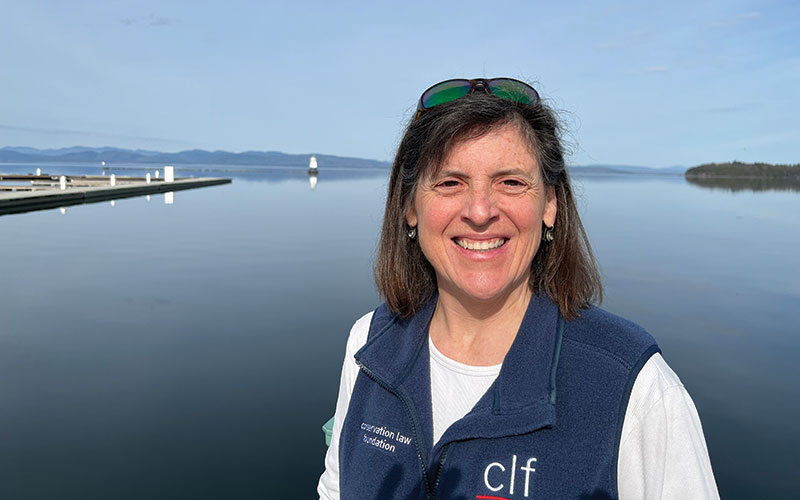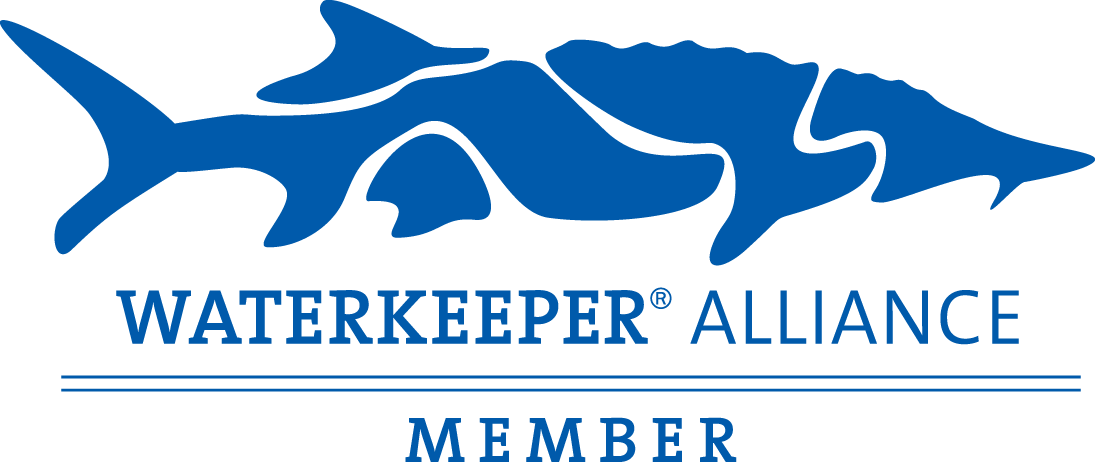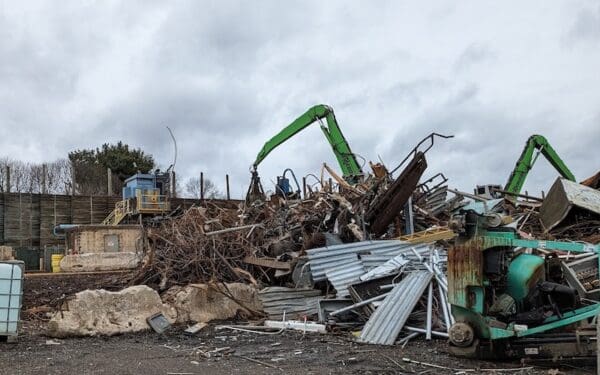
As CLF’s Lake Champlain Lakekeeper, Julie Silverman is helping to weave together a complex fabric of people and places working to protect and restore Lake Champlain and the network of rivers and streams that flow into it.
What drew you to Lake Champlain?
I grew up close to the lake, spending summers swimming, sailing, waterskiing, paddling, and fishing. Lake Champlain was a magical place for me as a kid, filled with endless adventures, and it still is today. I was living in Massachusetts when I had the opportunity to move back to Vermont to help build a science center focused on Lake Champlain. I jumped at the chance to come home and share my love for the lake. Over the years, I’ve shared my friends the fish, frogs, snakes, and turtles with hundreds of thousands of children and adults, opening their eyes to just how special the watershed is and why we each must protect and conserve Vermont’s most iconic lake.
What excites you most about your role as Lake Champlain Lakekeeper?
I’m excited to listen to people to find out about the issues impacting the health of their communities and the rivers and streams that connect us all as Basin neighbors. I’m also excited to bring people who may never have been on the lake face-to-face with a frog or eye-to-eye with an otter using the Lakekeeper boat. And I can’t wait to bring people out on the lake to help monitor, collect data, clean up, patrol, and protect it.
What is the biggest concern you hear from Vermonters about their water?
Vermonters are worried about water pollution. It threatens their health and that of their beloved lake. It closes their beaches, fills their swimming holes, kills the fish and wildlife they love, and contaminates their drinking water. They want to know why wastewater treatment facilities still have overflows, dumping untreated waste and toxic materials into their rivers and lakes even though State leaders keep passing budgets to fix the problem. They want to know why they see so much plastic foam debris washing up on beaches. And they want to know why we have more toxic algae than ever – and what’s being done about it.
What are the issues impacting the lake today?
Climate change impacts Lake Champlain in visible and invisible ways. Over the past 50 years, Vermont’s annual precipitation has risen seven inches, causing more frequent flooding. Rising waters spill over riverbanks, inundating our streets, damaging our neighborhoods, drowning our farms, and washing toxic pesticides, herbicides, manure, oil, plastic, and other pollutants into Lake Champlain. The loss of wetlands (nature’s sponges), forests (nature’s drinking straws), and unchecked development make flooding even worse because the rising water has no place to go.
What’s more, researchers project the economic impact of the damage caused by increased flooding will skyrocket by 148% in Vermont over the next 100 years without intervention. It is also projected that rising temperatures and nutrient pollution will cause more toxic algae outbreaks in our lakes and ponds. Such outbreaks will harm wildlife and pets, decimate recreation, and make people very sick.
What can people do to make a difference?
Get involved! So many decisions are made all the time that impact our waterways, our environment, and our health. Show up for public meetings, speak up, write letters, volunteer, talk to your neighbors, and let elected officials know you care about what we do on the land and how it impacts the water we drink and the waterways we love. Working together, we can make a difference.





